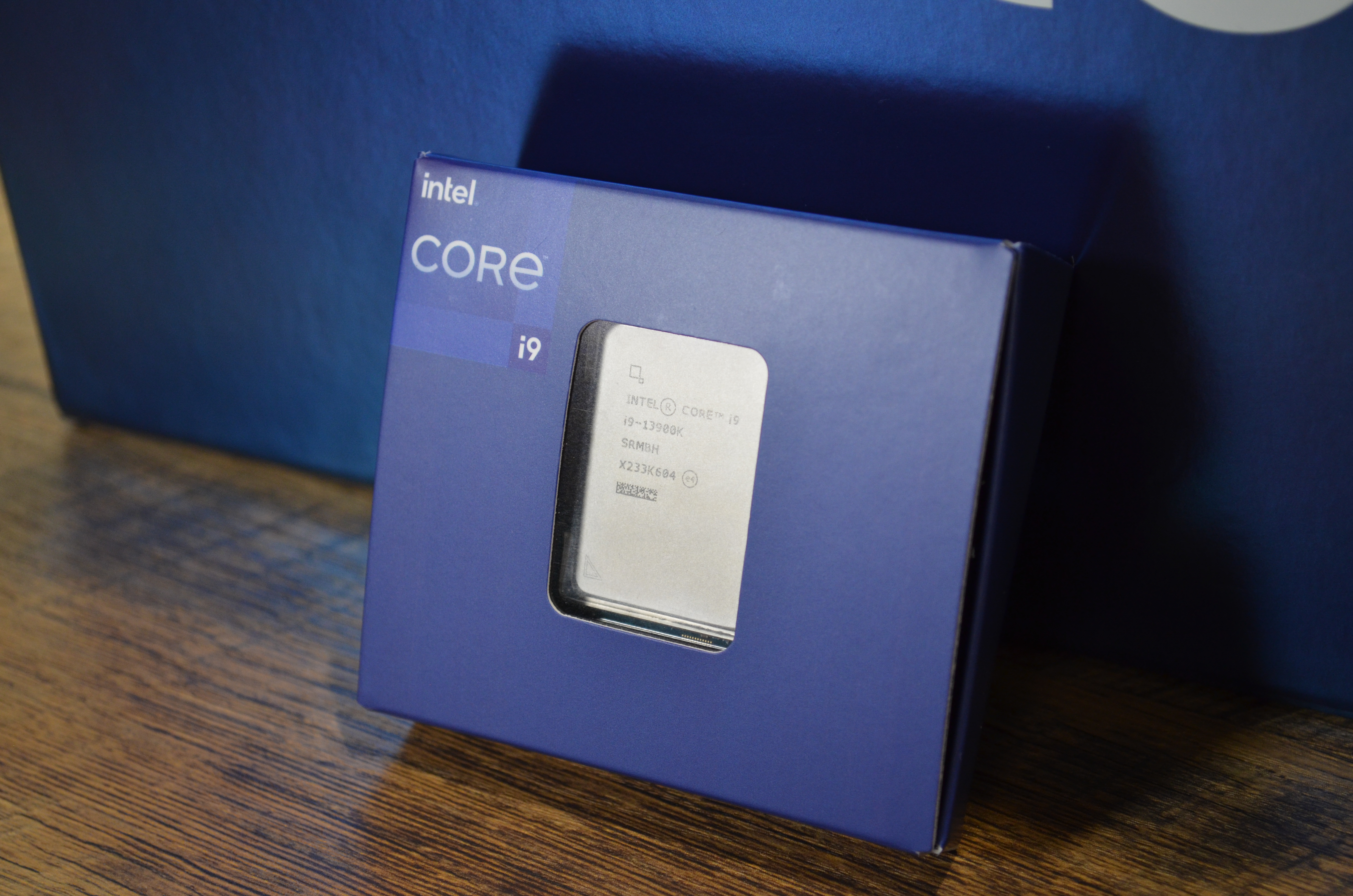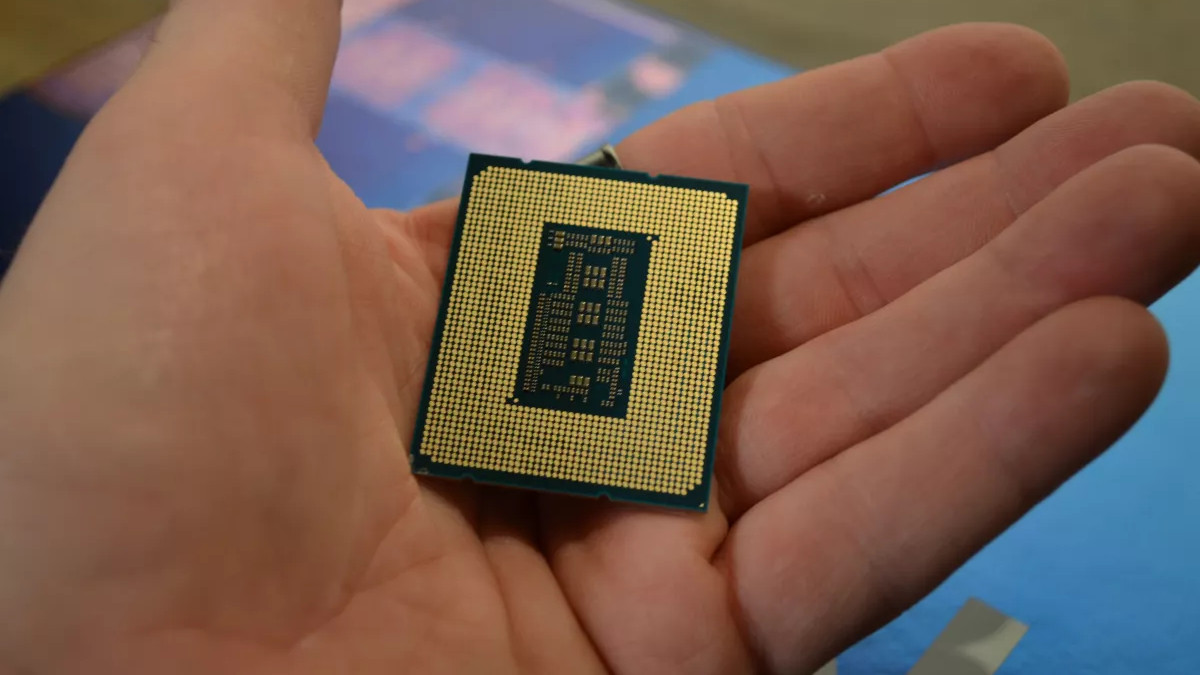Intel in 2022: year in review
How did Intel fare in 2022? In many respects, this was a bit of a rollercoaster ride of a year for Team Blue, with some highs, and some marked lows. Let’s dive straight in and take a close look at where Intel made good progress this year, and where things came off the tracks to a lesser – or greater – extent.
Raptors on the loose
Early in 2022, Intel made progress in gaining desktop market share back from AMD with robust Alder Lake processor sales, and followed that up strongly later in the year with the launch of new 13th-gen CPUs.
Intel unleashed its Raptor Lake processors in October 2022, or at least the first bunch of desktop CPUs led by the flagship Core i9-13900K. And despite this being ‘just’ a refresh of Alder Lake on paper, the 13th-gen newcomers added a lot of pep into the mix over and above Intel’s 12th-gen. Raptor Lake bristled with far more efficiency cores, it ramped up cache, and performance received a good boost over Alder Lake overall.

The flagship 13900K blew us away in terms of multi-core performance in particular, and is a seriously good heavyweight chip, although it is power-hungry, and obviously not cheap. Further down the Raptor Lake range there were CPUs that also shone, though, and the Core i5-13600K turned out to be a more affordable option that offered great gaming performance at an excellent value proposition.
There’s no question that Intel won the battle of the mid-range chips here against AMD’s Ryzen 7600X, which hit shelves just before the 13600K, and while those CPUs were actually well-matched in performance terms, Team Red lost out due to the upgrade costs of moving to the new Zen 4 platform. (Namely a new motherboard – with no truly wallet-friendly options on the table still, at the time of writing – plus DDR5 RAM is compulsory, whereas cheaper DDR4 memory can still be used with Raptor Lake).
In short, Raptor Lake was a big win for Intel in 2022, to the point that AMD slashed prices of its (still very new) Zen 4 CPUs (for Black Friday in particular, but also afterwards too). As a short aside, the Core i9-13900K also stole the crown of the fastest overclock ever for a desktop CPU – an astonishing 8.8GHz. That underlined the potential this silicon holds for enthusiasts overclockers.

Intel’s not so magical Alchemist GPU launch
In 2022, Intel finally unleashed its Arc Alchemist discrete graphics cards to take on AMD and Nvidia. This was Intel’s big moment to begin establishing itself as a third player in the graphics card market, and inject some much needed competitivity, although sadly the start that Arc GPUs (for laptops and desktops) got off to could be described in two words: shaky and wobbly. Both of those words mean the same thing, of course, but the early days of Arc were so all over the place that it bears doubling-down on the faltering nature of the launch.
We witnessed delays, GPUs which were only launched in Asia, promises from Intel that things weren’t so far off, then more delays… you get the picture. In short, disappointment reigned on many fronts, from the pushing back of launch dates – or not even providing them – to the performance of the Arc graphics cards that did emerge as 2022 rolled onwards (the budget-oriented A3 series and top-end A7). Wonky drivers and performance problems proved to be thorny issues for many games.
At one stage, there were even rumors that Intel was in such a bad way with its Arc GPUs that the firm was considering ditching the entire project, something Team Blue vehemently denied, and has since proved its seriousness to continue with Arc.
In fact, at the end of the year, Intel took some serious strides forward with Arc GPU drivers, ushering in big performance boosts for some games. That’s an optimistic note to finish on for 2022 at least, and if Intel can continue ironing out drivers, and price competitively, the story Arc of its new GPUs might have a happy ending after all. Which is definitely not what we envisaged mid-year, that’s for sure.
It’s clear that Nvidia is still open to attack at the budget end of the market, which seems to remain a much lesser priority for Team Green, and a definite space where Intel could capitalize against the dominant GPU power as a result.
XeSS success
XeSS – which is Intel’s equivalent to Nvidia DLSS, or AMD FSR – also quietly established itself as a force in the frame rate boosting world, with an impressive initial showing in its early days.
What we must remember here is that in their first incarnations, DLSS and FSR had their fair share of stumbling blocks, and Intel’s opening salvo with XeSS is comparatively impressive in this initial implementation. That bodes well for the future, alongside the progress made with the Arc graphics driver that we just mentioned.

Flooring the process accelerator
Intel closed out 2022 with some big talk on how it’s accelerating chip development and production, including manufacturing chips for third-parties, like MediaTek, and dropping to more advanced processes – meaning faster, more efficient chips – without any delays. And delays on this front is something Intel has suffered badly with in the past, as you may recall (getting stuck on 14nm refreshes of its CPUs for what seemed like forever).
All that’s in the past, though, according to Intel’s Ann Kelleher, VP and Technology Development General Manager, who said in December that Intel isn’t just on track, but it’s actively ahead of the game in some areas. Team Blue is already mass producing 7nm chips – that’s the next process from current 10nm silicon – and the company is ready to start with 4nm, the step after that.
That’s code for ‘watch out AMD – we’re coming to steal further turf from Ryzen processors.’

Sliding profits and job cuts
While progress may be back on track in honing and ushering in new processes, and plans to take back chip production leadership underway, this didn’t come without difficult decisions for Intel in 2022, as its profit levels dropped markedly (the big slump in PC sales not helping Team Blue, of course).
You may recall Intel shut down its Optane memory business in July, and then in September, we had CEO Pat Gelsinger warning that Intel’s performance was going to continue sliding in the future, in vital arenas such as server CPUs (where a decline is predicted to continue until 2025, in fact).
All this culminated in an October announcement of cost-cutting plans that involve a “meaningful number” of staff layoffs, with Intel looking to save some $3 billion over the course of next year (and far more than that down the line, to the tune of up to $10 billion in yearly cost reductions come 2025).
Concluding thoughts
Intel did have success stories in 2022, notably with consumer processors – and Raptor Lake more than solidifying the progress made off the back of Alder Lake – but that played out against a backdrop of difficulties in the server market, an awfully rocky and disappointing Arc GPU launch, alongside dwindling profits and job cuts.
It’s hard to call the year a favorable one for Intel, then, but the company does appear to be realigning itself to be ably positioned for better things to happen going forward. Certainly in terms of bolstering chip production capabilities and staying on track with advancing to new processes without delays – Meteor Lake CPUs remain on target for a 2023 launch.
And let’s not forget that Arc graphics cards weren’t entirely a wash in 2022. It was a bad start for the GPUs, let’s make no bones about that, but Intel’s drivers made good progress with performance gains as the year drew to a close (and XeSS established itself nicely). Indeed, Intel gained a meaningful discrete GPU market share of 4% as the year ended, with the potential to eke out more in the budget arena in 2023.
There’s a sense that the negative aspects of this past year are going to be turned more positive, perhaps – aside from those very unfortunate job losses, of course.
stereoguide-referencehometheater-techradar